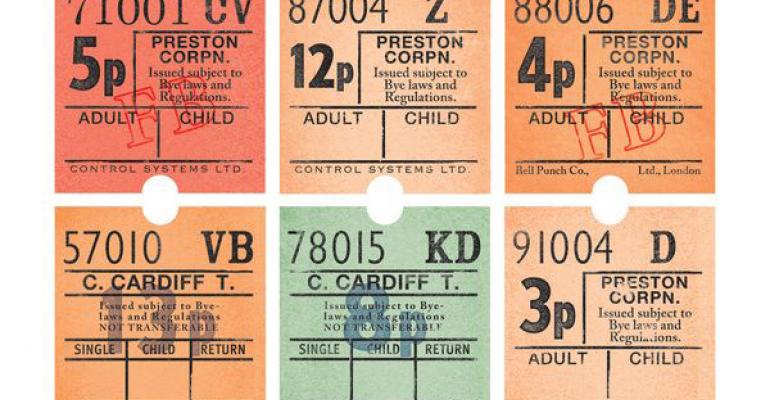- AUTHORJust the ticket!
- December 6 2018
Just the ticket!

In the specialised world of New Zealand climate modelling, contributing to the Unified Model, run by the UK Met Office, is the ultimate success story.
New Zealand researchers have recently contributed two such “tickets” to improve the Unified Model code, and are in the process of contributing two more, an unprecedented success from the smallest country in the UK Met Office club.
We spoke to NIWA researchers Fraser Dennison and Olaf Morgenstern about what this means both for global climate modelling and for New Zealand’s ability to better predict our “local” southern ocean climate.
First things first, what is a “ticket,” and why are we so excited about it?
Fraser: A “ticket” refers to any incremental change to the UK’s Unified Model. Any change to the model code – from the fixing of a minor bug to a major change in the model science – has a ticket attached, in order to keep track of the changes and for quality control. For significant scientific changes (such as our work), a ticket includes a description of the change, some evidence from model test runs illustrating the impact of the change, and a checklist to make sure the change doesn’t unintentionally break another aspect of the model.
Olaf: Technically, the Unified Model is the name for the atmosphere component of our model. NIWA has been using it for 20 years – under licence from the UK Met Office, for weather forecasting and climate studies. These days, the United Model is supported by a consortium of six “tier-1” member states (represented by meteorological services or research institutes) and a couple of “tier-2” players like the US Air Force. As a rule, all tier-1 members (including New Zealand) should contribute to model development, but in practice almost all model development has occurred in Britain. So New Zealand’s recent contribution is a little out of the ordinary.
Other countries in the club include South Korea, India, South Africa and Australia. Their level of contribution doesn’t necessarily relate to their size. Australia, for example, has a lot more Unified Model users than us, but their contribution to its development isn’t proportionally bigger than ours, because they focus on developing their own model, which requires a large effort to sustain.
The UK Met Office, which leads and coordinates this global collaboration effort, is forever trying to increase the value of the partnership to all its users. We in New Zealand don’t aim to have our own, fully independent model, which means we can focus more on contributing improvements. This gives us a disproportionate standing in the consortium. We’re targeting our model development efforts in areas that are critical to climate projections for New Zealand: Southern Ocean clouds, Antarctic ozone depletion, Antarctic bottom-water formation and sea ice. And yes, we’re making progress in all of these areas.
For a ticket to be accepted, it has to meet a range of criteria, including:
- Scientific suitability. Does the science stack up? Is it beneficial, or at least neutral, in all configurations of the model (which cover both weather and climate modelling)?
- Technical suitability. Even if a change is scientifically desirable, is it too expensive to run? In this case, it may be accepted, but won’t necessarily be active in operational versions.
Why is it so important for New Zealand to participate in the international global climate modelling community?
Olaf: Generally speaking, all the low-hanging fruit in climate modelling have been picked. Model improvement is becoming ever more complex and demands a bigger and bigger effort. Against this backdrop, the UK Met Office decided some time ago to turn the Unified Model into a multi-institutional and international research collaboration as the model had outgrown their own resources. The collaboration gives us an opportunity to get involved in climate modelling and to pursue our own, unique research agenda, without meeting the size requirements that would otherwise be prohibitive. For the Deep South Challenge, it means we can live up to our ambition to produce climate simulations that are better than what we’ve got at the moment. This is only possible because we are in this international partnership.
Fraser: The goal of the stratospheric chemistry project is to improve the simulation of ozone in global climate models – which we’ve been doing successfully. This is important globally, but it’s most important in the Southern Hemisphere, where the “ozone hole” plays a large role in controlling the climate. Even though ozone depletion occurs up in the stratosphere, it has effects (via complicated atmospheric processes) on surface climate in Antarctica and around the “mid-latitudes” – that is, Australia, New Zealand and South America. In New Zealand, for example, you can link stratospheric ozone depletion with less rainfall along the west coast.
Olaf: Overall, this collaboration means that our own NZ Earth System Model actually remains very closely tied to the UK Earth System Model. Sometimes, for Deep South Challenge purposes, we may choose to use a model configuration that differs in some way from the UKESM, but these differences are superficial. It’s important to understand our relationship with the global modelling effort. We’re not going it alone, and that’s great – for New Zealand, and for the international community.
Olaf and Fraser would also like to acknowledge NIWA’s Vidya Varma, who is very active in model development.
Interview by Lorraine Taylor.